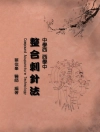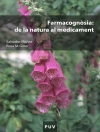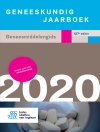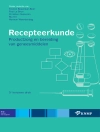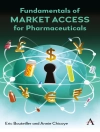A Doody’s Core Title 2012
The thoroughly revised Second Edition of this authoritative reference continues to define the standard of care for the field of spinal cord medicine. Encompassing all of the diseases and disorders that may a!ect the proper functioning of the spinal cord or spinal nerves, this comprehensive volume provides a state of the art review of the principles of care and best practices for restoring function and quality of life to patients with spinal cord injuries.
Expert contributors from multiple disciplines cover topics ranging from acute medical and surgical management of specific problems to cutting-edge research, bladder, bowel and sexual dysfunction, neurologic and musculoskeletal issues, advanced rehabilitation techniques and technologies, functional outcomes, and psychosocial care. While comprehensive in scope, Spinal Cord Medicine offers practical guidance for physicians and other health care professionals involved in the management of individuals with SCI, multiple sclerosis, and other spinal cord disorders. The Second Edition has been completely updated to fully reflect current science and practice. Each section has been re-ordered to better present information and the Second Edition brings in many new authors and topics, more diagrams, illustrations, and tables to solidify concepts, and contains 18 entirely new chapters.
Spinal Cord Medicine: Principles and Practice, Second Edition, reflects the breadth and depth of this multi-faceted specialty. Involving over 150 authors from more than 20 fields of medicine, it is a trusted reference for anyone who works with spinal cord patients and strives to deliver superior clinical care and improve outcomes.
قائمة المحتويات
I: Introduction and Evaluation : 1. Development, Anatomy, and Function of the Spinal Cord; 2. Spinal Cord Pathology; 3. Imaging of the Spinal Cord; 4. Epidemiology of Spinal Cord Injury; 5. Neurological Assessment of Spinal Cord Dysfunction; 6. The Electrodiagnostic Examination in Spinal Cord Disorders; 7. Electrodiagnostic Evaluation of the Spinal Tracts; 8. Functional Assessment in Spinal Cord Injury Rehabilitation; 9. Outcomes Following Spinal Cord Injury; II: Acute Spinal Cord Injury Management and Surgical Considerations : 10. Prehospital Management of Spinal Cord Injured Patients; 11. Management of Trauma Patients with Complex Injuries; 12. Neuro-Critical Care Management of the Patient with an Acute Spinal Cord Injury; 13. Factors Affecting Surgical Decision Making; 14. Cervical Injuries: Indications and Options for Surgery; 15. Thoracolumbar Fractures; III: Medical Management : 16. Respiratory Dysfunction in Spinal Cord Disorders; 17. Sleep Disorders in Spinal Cord Injury; 18. Cardiovascular Dysfunction in Spinal Cord Disorders; 19. Thromboembolism in Spinal Cord Disorders; 20. Infection and Spinal Cord Injury; 21. The Immune System and Inflammatory Response in Persons with SCI; 22. Endocrine and Metabolic Consequences of Spinal Cord Injuries; 23. Primary Care for Persons with Spinal Cord Injury; 24. The Role of Pharmacokinetics in Optimizing Drug Therapy in Patients with Spinal Cord Injury; 25. Nutrition in Spinal Cord Injury; 26. Spinal Cord Injury and Aging ; IV: Management of the Bladder, Bowel, Sexual Dysfunction, and Women’s health : 27. Normal and Abnormal Micturition: 28. Renal Insufficiency in Patients with Spinal Cord Injury; 29. Urologic Management in Spinal Cord Injury; 30. Urolithiasis in Spinal Cord Disorders; 31. The Gastrointestinal System After Spinal Cord Injury: Assessment and Intervention; 32. Sexual Dysfunction and Infertility in Men with Spinal Cord Injury; 33. Sexual Dysfunction in Women with Spinal Cord Injury; 34. Women’s Health Issues; V: Neurologic Aspects of Spinal Cord Care : 35. Acute Nontraumatic Myelopathies; 36. Chronic Nontraumatic Myelopathies; 37. Multiple Sclerosis; 38. Pain Management in Persons with Spinal Cord Injury; 39. New Advances in the Surgical Treatment of Non-Traumatic Myelopathies; 40. Spasticity: Pathophysiology, Assessment, and Management; 41. Autonomic Dysfunction in Spinal Cord Disease; 42. Syringomyelia; 43. Surgical Treatment of Posttraumatic Tethered and Cystic Spinal Cords; 44. Dual Diagnosis: Spinal Cord Injury and Brain Injury; 45. Spinal Cord Disorders in Children and Adolescents; VI: Musculoskeletal Care : 46. Musculoskeletal Pain and Overuse Injuries; 47. Extremity Fractures in Spinal Cord Injury; 48. Functional Restoration of the Upper Extremity in Tetraplegia; 49. Medical Management of Pressure Ulcers; 50. The Surgical Management of Pressure Ulcers; 51. Heterotopic Ossification; 52. Scoliosis and Spinal Deformities: Avoiding and Managing Neurologic Deficits; 53. The Spondyloarthropathies; 54. Surgical Management of Spondyloarthropathies in the Spinal Cord Injury Patient; VII: Rehabilitation : 55. Wheelchairs and Seating for People with Spinal Cord Injuries; 56. Spinal Orthoses; 57. Upper Limb Orthoses; 58. Lower Limb Othoses and Rehabilitation; 59. Activities of Daily Living; 60. Recreation and Leisure Skills for People with Spinal Cord Disorders; 61. Vocational Rehabilitation and Spinal Cord Injury; 62. Driving with a Spinal Cord Disorder; 63. Functional Electrical Stimulation; 64. Cardiovascular Fitness and Exercise Prescription after Spinal Cord Injury; 65. Architectural Considerations for Improving Access; VIII: Recent Advances in Spinal Cord Research : 66. Mechanisms and Natural History of Spinal Cord Injury: Morphological, Cellular, and Molecular Features; 67. Acute Treatment Strategies for Spinal Cord Injury: Pharmacological Interventions, Hypothermia, and Surgical Decompression; 68. Traversing Barriers in the Spinal Cord Microenvironment that Prevent’s Functional Recovery: Interventions to Prevent Cell Death and Promote Neuroplasticity and Regeneration; 69. Reconstructing the Microenvironment of the Injured Spinal Cord:Cell Transplantation and Bridge Building to Enhance Functional Recovery; 70. A Review of Clinical Trials and Future Directions for Clinical Studies in Acute Spinal Cord Injury; 71. Considerations for the Translation of Pre-Clinical Discoveries and Valid Spinal Cord Injury Clinical Trials; 72. Retraining the Human Spinal Cord: Exercise Interventions to Enhance Recovery after a Spinal Cord Injury; 73. Epidural Spinal Cord Stimulation to Facilitate Functional Recovery after Spinal Cord Injury: Combinations of Therapies for Synergistic Outcomes; 74. Functional Magnetic Stimulation; 75. Restoration of Ventilation and Cough with Functional Electrical Stimulation: Patient Evaluation and Comparison of Currently Available Systems; IX: Special Topics in Spinal Cord Medicine : 76. History of Spinal Cord Medicine; 77. Psychological Factors in Spinal Cord Injury; 78. Social Issues in Spinal Cord Injury; 79. Caring for Spinal Cord Injury with Complementary and Alternative Medicine; 80. The Financial Impact of Spinal Cord Dysfunction; 81. The Prevention of Spinal Cord Injury; 82. Model Spinal Cord Injury Systems of Care; 83. VA Spinal Cord Injury and Disorders System of Care; 84. International Perspectives on Spinal Cord Injury Care; 85. Consortium for Spinal Cord Medicine Clinical Practice Guidelines; 86. Subspecialty Certification in Spinal Cord Injury Medicine; The Commission on Accreditation of Rehabilitation Facilities; 88. Health Industry and Product Information; Index
عن المؤلف
Robert M. Woolsey, MD, Professor of Neurology (Emeritus), Saint Louis University, Saint Louis, MO


